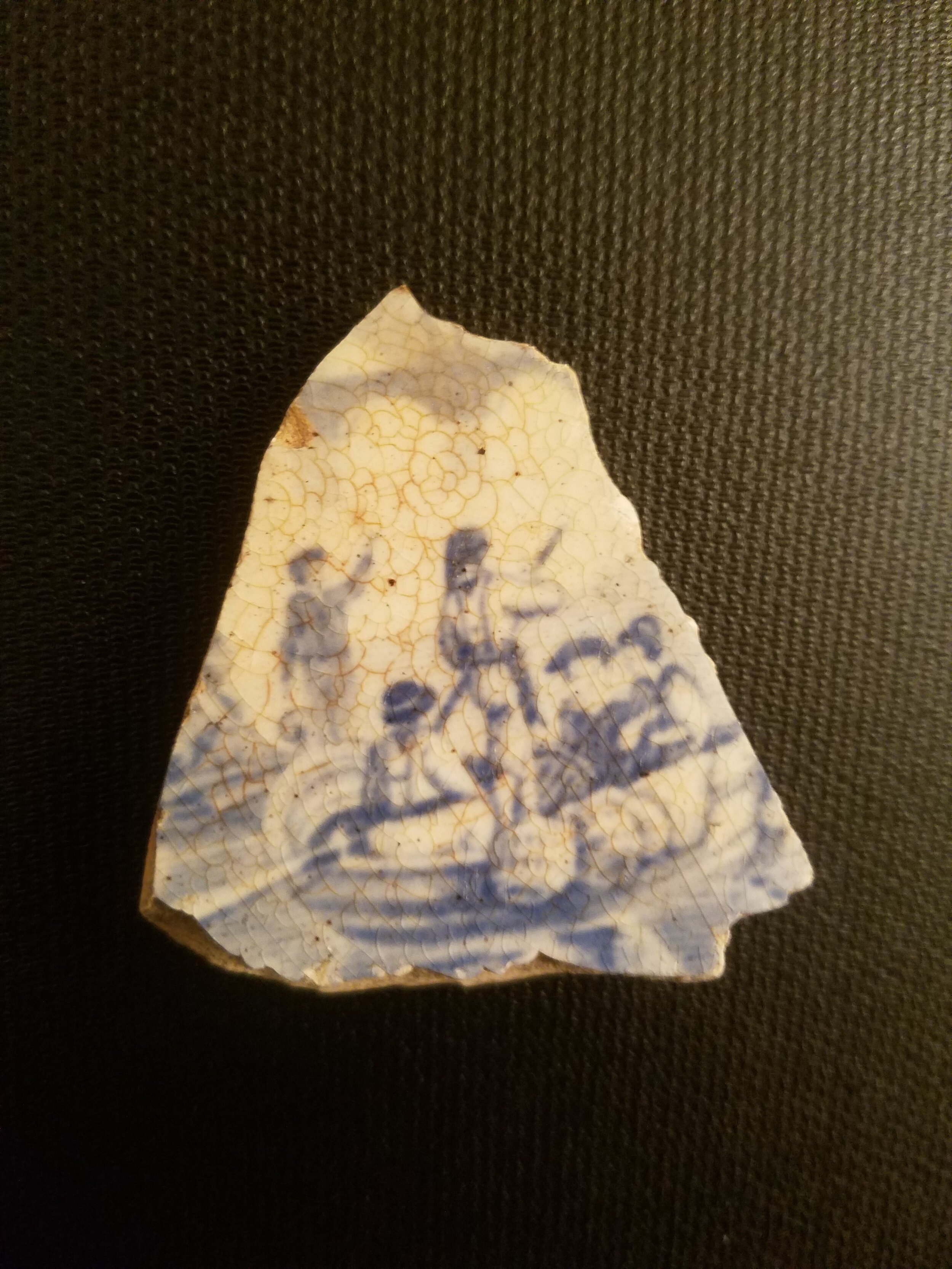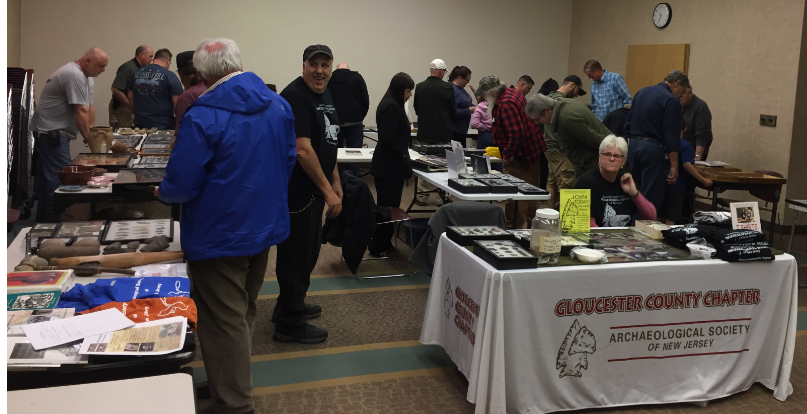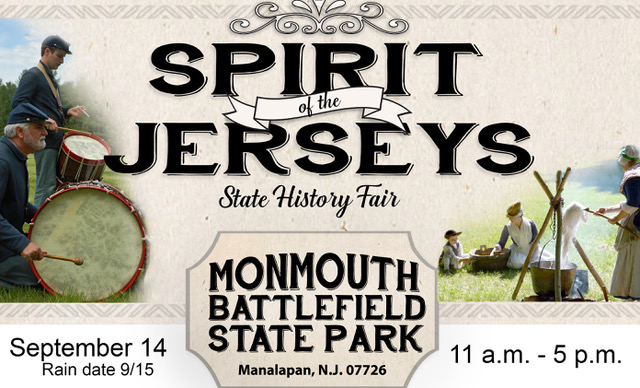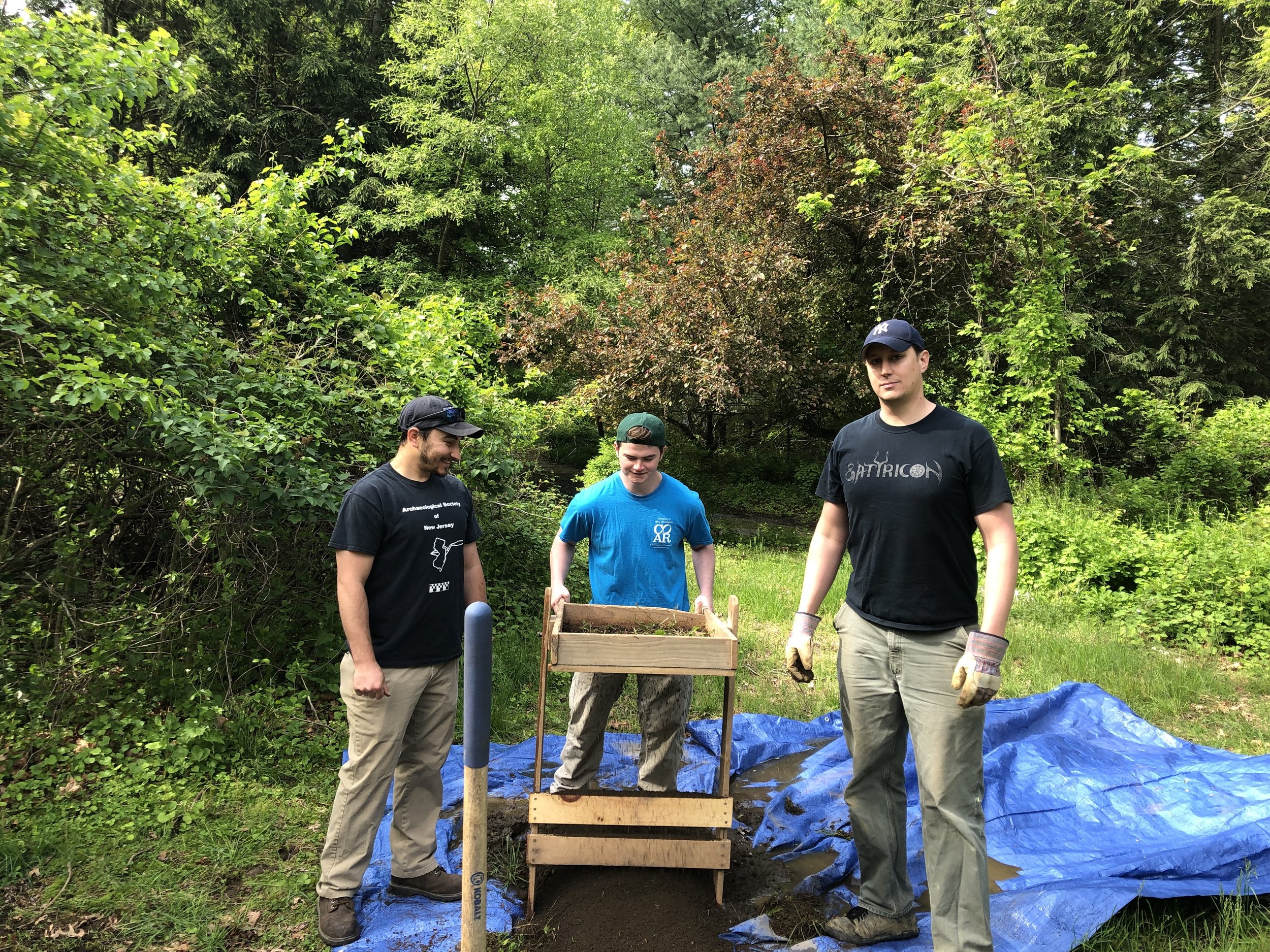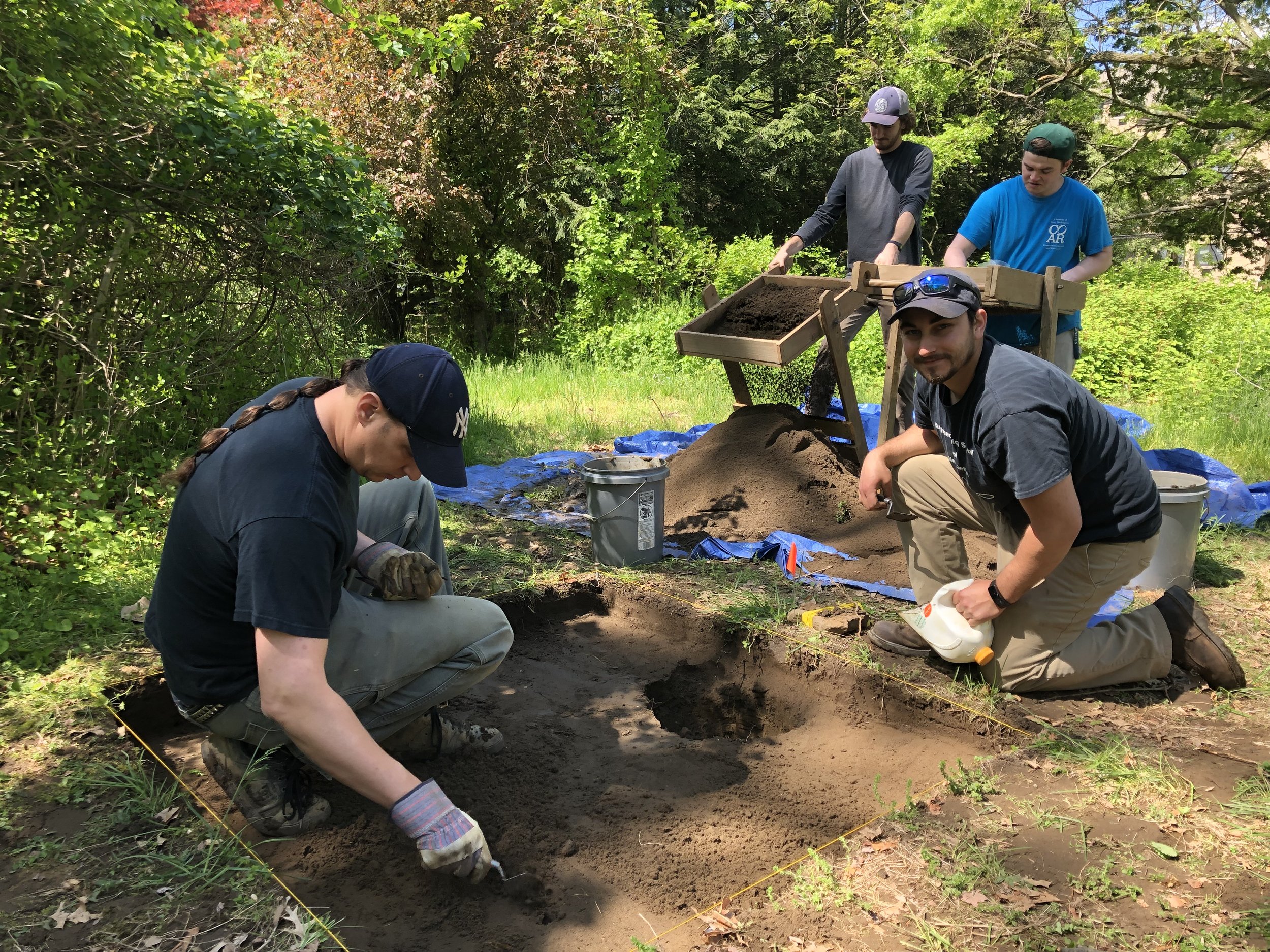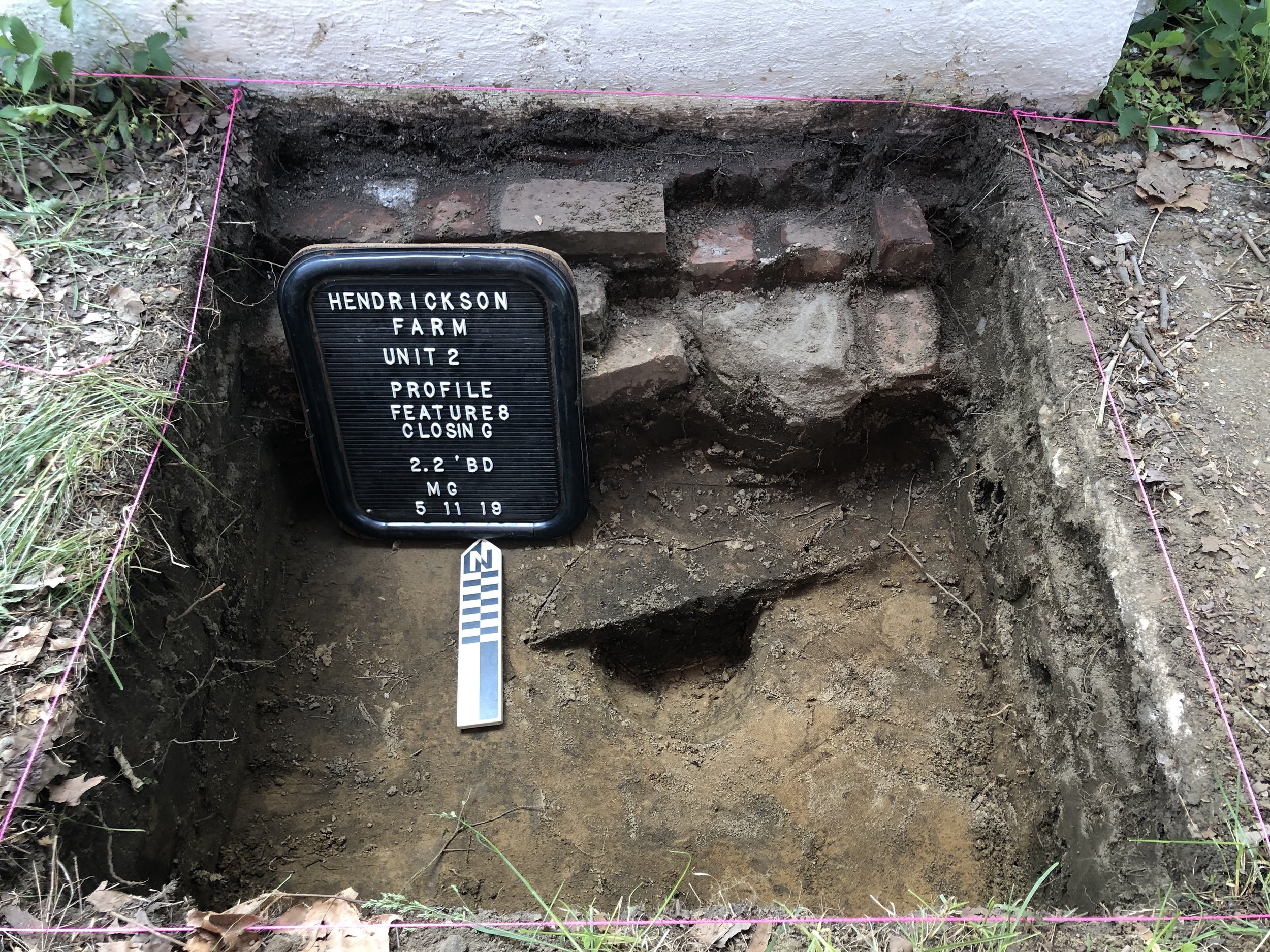Candidates for the ASNJ Executive Board (2020-2022)
Candidate for President
Michael Gall
I am running for President of the ASNJ. I have been a member of the society since 1998 and an ASNJ board member since 2008, having served as Member-At-Large, Treasurer, Membership (2nd Vice President), and President. I have worked tirelessly to promote the society; developed relationships with historical societies, universities and County Cultural Commissions; helped modernize our web presence with other board members; and have directed several public archaeology opportunities through the Society for our members. As President, I will continue to serve and promote the Society’s interests.
Candidate for 1st Vice President (Education)
David Mudge
I have worked hard to advance the cause of archaeology in the state and region, both in my job and in my off hours. From the production of documentaries, to the development of teaching guides and exhibits, I have striven to bring the past to life for the public edification. As part of my efforts, I have reached out to various representatives of the Native America community many times, in order to give them a stronger voice in their history. As I read various news items and comments, I am convinced that we still need to work hard at informing the public on the value of archaeology, and helping the public to make informed decisions regarding preservation options.
Candidate for 2nd Vice President (Membership)
Richard Adamczyk
I am running for the 2nd Vice President, Membership position. I am currently performing the duties of this position and have been for the past year. I hope to continue managing the society's membership list and enact new initiatives to help increase our numbers. I want to work with the Social Media Coordinator to improve our online presence and encourage new members to join. I would also like to work with the Vice President of Education to reach out to high schools and universities, attracting the next generation of archaeologists to the society.
Candidate for 3rd Vice President (Programs)
Kristen Hohn
Kristen Hohn is a Historic Archaeologist and Preservation Specialist working for the Monmouth County Park System, with 10 years of experience in the Middle Atlantic Region. Her research interests include 18th-century textile production and the economic development of New Jersey in the early American nation. The position of Program Chair falls within her existing skills set, as a past board member, and later president, of a collegiate non-profit philanthropic organization. Comfortable negotiating program spaces and with professional networking, Ms. Hohn hopes to use her existing connections with historic organizations throughout the state in the scheduling of future meetings and society events.
Candidates for Treasurer (Vote for 1)
Jesse Walker
I have served on the ASNJ executive board since 2016 as the newsletter editor and am a Senior Archaeologist working in the cultural resources management department at AECOM in Burlington, NJ. I specialize in Native American archaeology and conducted archaeological investigations in New Jersey over the last 17 years. I have also co-authored an article in the ASNJ Bulletin on the Hoffman site (28Gl228) based on analysis collaboration with Guy DiGiugno. As Treasurer, I will continue to manage the organization’s bank accounts and finances.
Danielle Cathcart
I have over a decade of archaeological experience in the Mid-Atlantic and Northeast regions, working for academic and non-profit institutions, as well as in cultural resource management since 2010. As a former and active member of several professional organizations, I have participated in panel discussions, presented original research, and served as a steering committee chair for the CNEA. I am detail-oriented and place great emphasis on accuracy and efficiency in my work as a material culture analyst and collections manager. Thank you for your consideration.
Candidate for Recording Secretary
Matthew Del Guercio
I am a graduate student of anthropology at Monmouth University and a field technician for Richard Grubb and Associates, NJ. I also work as the site manager of a local historic site, the Parker Farmstead in Little Silver, NJ. I have a strong interest in the historical archaeology of New Jersey. As a hardworking and organized individual, I hope to be an asset to the ASNJ while serving as recording secretary.
Candidates for Social Media Manager (Vote for 1)
Sabrina Madjeski
Hi all! I'm Sabrina and I'm the current social media person for ASNJ! I'm constantly on social media and I enjoy taking photos and posting them on social media (I mean just take a look at my personal social media haha!) I also share, etc. photos that others either post on social media and/or send to me. I do spread the word as to what's going on in the history and archaeology field.
Alexis Alemy
I am seeking the position of Social Media Manager. I have experience managing institutional social media accounts on Facebook and Instagram and have many ideas that I would like to implement for the ASNJ including daily posting related to both the specific activities of the ASNJ and to archaeology in New Jersey as whole. My mission is to increase public engagement with the ASNJ social media pages in an effort to raise awareness of the organization, archaeology, and the value of history and historical research by posting content consistently and maintaining an active social media environment, informed by the collective work of members of the ASNJ and archaeologists in New Jersey.
Candidate for Newsletter Editor
Joshua Butchko
Greetings all! For those who don’t know me, I’ve been employed at Hunter Research, Inc. since 2003, where I currently serve as Principal Investigator, Laboratory Director and Company Safety Officer. I specialize in historic material culture and have a knack for executing effective monitoring programs, but my experience is well rounded. Lately, I’ve been especially keen on public archaeology programming and exhibit development. My interest in the Newsletter Editor position is in part borne from my interest in returning to my past life as a student newspaper editor, but also because I think it’s the right opportunity to get more involved with ASNJ. There are several issues in CRM and the field of archaeology at large which I’d hope to acknowledge where possible via the newsletter. These include accessibility, diversity and public outreach. If selected, I look forward to working with the board to provide our very best to membership and other readers.
Candidate for Bulletin Editor
Richard Veit, Ph.D.
I have been a member of the ASNJ for over twenty years. During this time, I have served as a Member-at-Large (1993-1998), Treasurer (1998-2004), First Vice President (2004-2007), President (2007-2011) and Third Vice President—Programs (2012-2013). Since 2016, I have served as Bulletin Editor. I am also a Fellow of the Archaeological Society of New Jersey and a Registered Professional Archaeologist. My BA in Anthropology is from Drew University, my MA is from the College of William and Mary and in 1997 I completed my Ph.D. in Anthropology at the University of Pennsylvania. Currently, I am a Professor of Anthropology and Associate Dean for Faculty Affairs of the School of Humanities and Social Sciences at Monmouth University. I teach courses on archaeology, cultural anthropology, historical archaeology, historic preservation, and New Jersey history. Prior to coming to Monmouth, I worked in cultural resource management for CRCG, Louis Berger and Associates, and Gannett Fleming. I still do occasional consulting on historic cemeteries and tree-ring dating. My research interests include the archaeology of colonial New Jersey and early American material culture. As Bulletin Editor, I look forward to supporting the ASNJ by publishing the best current research on New Jersey archaeology.
Candidate for Webmaster
Evan Mydlowski
I am currently on the ASNJ Executive Board as the Webmaster (1 year) and would like to be re-elected into this position to continue to help make the ASNJ web presence flourish and grow. I have been designing and maintaining websites for 7 years, and I have most recently designed the new website for the ASNJ. My experience includes maintaining the online version of Monmouth University’s Newspaper, The Outlook, for 4 years, as well as, help design their present website to showcase their content. I believe that the latest version of the ASNJ website can only get better from here on out and I would like to be the person to continue to oversee and improve the process of adhering to the flow of visitors of the website and evolving trends within the online community. I am excited to implement new ideas for the ASNJ and the website if I am chosen to continue in my position.
Candidates for Member-At-Large (Vote for 2)
Michelle Davenport
I am running for a seat on the Board for the Archaeological Society of New Jersey as a Member-at-Large. During graduate school, I served as Vice President of the anthropology department’s Graduate Student Association, where I realized just how important it is for an organization to receive input from all of its members. The ASNJ is able to serve the New Jersey community because of its active membership, comprised of members originating in a wide variety of academic and professional disciplines, and I look forward to continuing to facilitate effective communication between members and the board. Through the ASNJ, I am constantly learning about the history and prehistory of New Jersey and the Mid-Atlantic, which is a relatively new area for me. As a member of the ASNJ and a Member-at-Large, I look forward to not only continuing to learn from all of you, but also hope to bring a wider archaeological and historical perspective to local research questions as a result of my own experience.
Matthew Tomaso
Born and raised in Warren Township, New Jersey, I worked and studied in Maine and Texas in the late 1980s and early 1990s, returning to the garden state to teach a field school and classroom courses in archaeology and earth science at Montclair State University in the mid-1990s. I have also worked in Cultural Resource Management since 1987 and have served on the ASNJ’s and a few other organizations’ executive boards almost continuously since 1997. My interests in archaeology are very diverse, but, having done my graduate work under the late Karl W. Butzer, I tend to emphasize an understanding of environmental contexts, formation processes and evidence-based approaches to cultural phenomena. I would like to serve, again as Member-At-Large. I believe that my depth of experience both inside of and outside of New Jersey, my strong interdisciplinary academic and regulatory background and my employment with a broadly interdisciplinary consulting firm allow me to offer a somewhat unique perspective on the Society’s concerns, initiatives and future.
Download the ballot and please hand deliver it at the January 18th, 2020 meeting.
